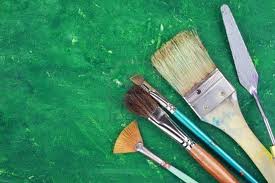Here’s a simple article on a subject that I often get asked about. What makes a good brush? And how do I take care of it? The Hobby Sensei has the answers!
Lets start off by addressing the first question, what does a good brush look like?
Well for starters, when choosing a good brush the first thing to look for is a natural hair brush. Natural hair has scales, which gives you better control of how you deposit your paint whereas synthetic brushes are smooth plastic, and lack the same level of control.
I always use the fountain pen analogy: a natural hair brush is like a working fountain pen. When you apply pressure it lets out its ink (paint). Synthetic brushes are like a broken fountain pen, as soon as you place the tip on a surface it releases its entire load, and you are forced to push around a puddle of paint.
Not all natural hair brushes are equal though.
The best brushes are:
1) red sable hair
2) not cut to a point.
Kosinski red sable brushes are my personal favorite. Longevity and elasticity is achieved by only using the male, tail hair of the Kolinsky red sable (Mustela Sibirica), grown in the extreme cold of Siberian and Manchurian winters. Their fur is very fine and soft, yet very durable, all of which are desirable qualities in a brush. Even the largest brushes come to the finest points.
The best of these brushes are assembled in a way that utilizes the natural curvature of the hair to make a point, and are never cut to a point. The difference is the hair has a “memory” to it. Cut bushes tend to “split” after usage, as the hair reverts to its natural shape. Another misnomer is that smaller brushes make finer points. This is not true, large KRS brushes make just as fine a point as any small brush, but are superior in the fact that they have larger reservoirs and hold much more paint. This means that you can work for longer periods without the paint drying out in your brush.
The amount of pressure you use when painting is what dictates how fine the line you paint is. A light touch, and you achieve the finest detail. Press harder and you can base coat large areas. Another benefit of a good KRS brush is that it “tells” you when it’s properly loaded to paint. After loading you brush, blot slightly on some tissue, and you know you have just the right amount of paint when the brush has returned to its fine tip.
Some of the best KSR brushes on the market are Winsor & Newton, Raphaël, and DaVinici (which we sell here at Frontline! -ed). All of these factors result in a brush that tends to be much more expensive, but if properly maintained a $25 brush will last easily as long as 7, $5 brushes would. This brings us to the second point of this article: Brush Maintenance.

